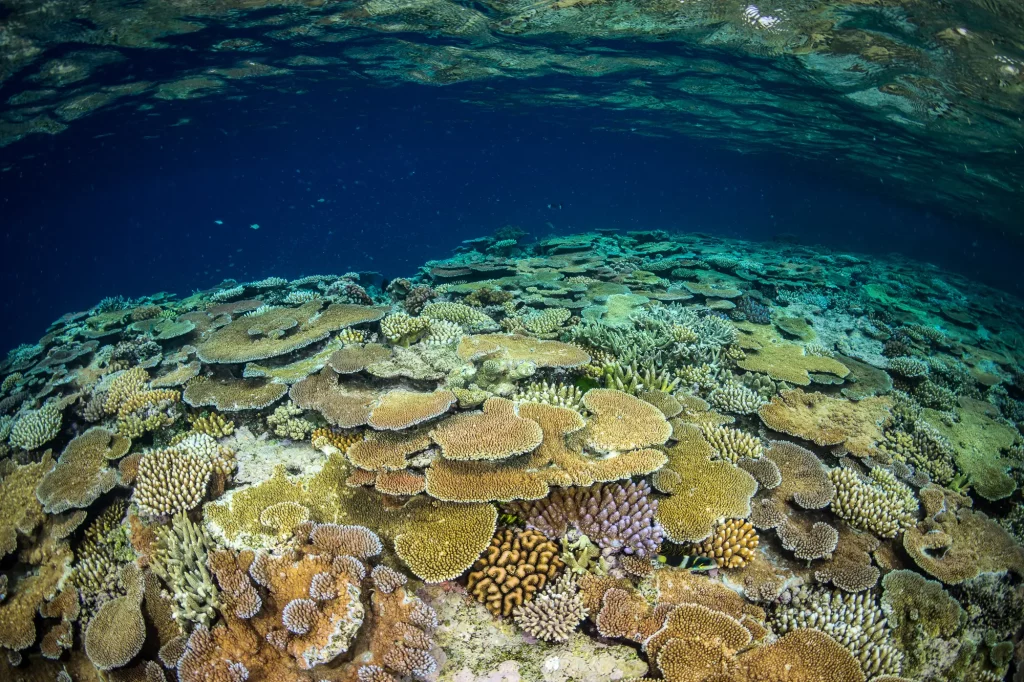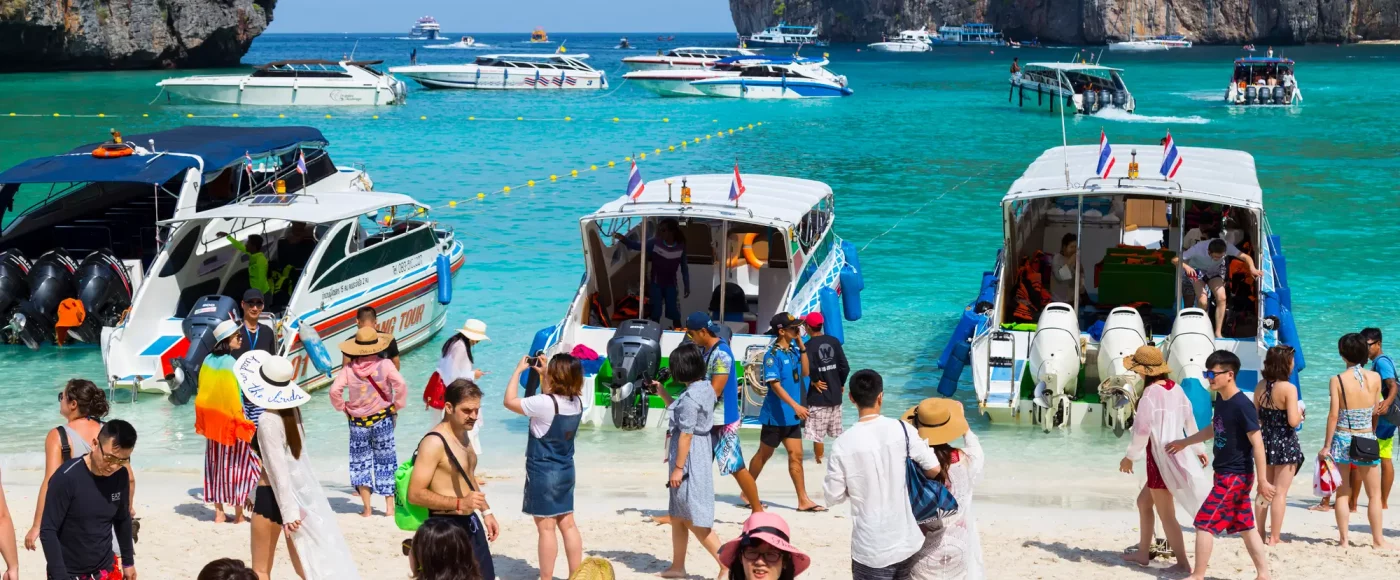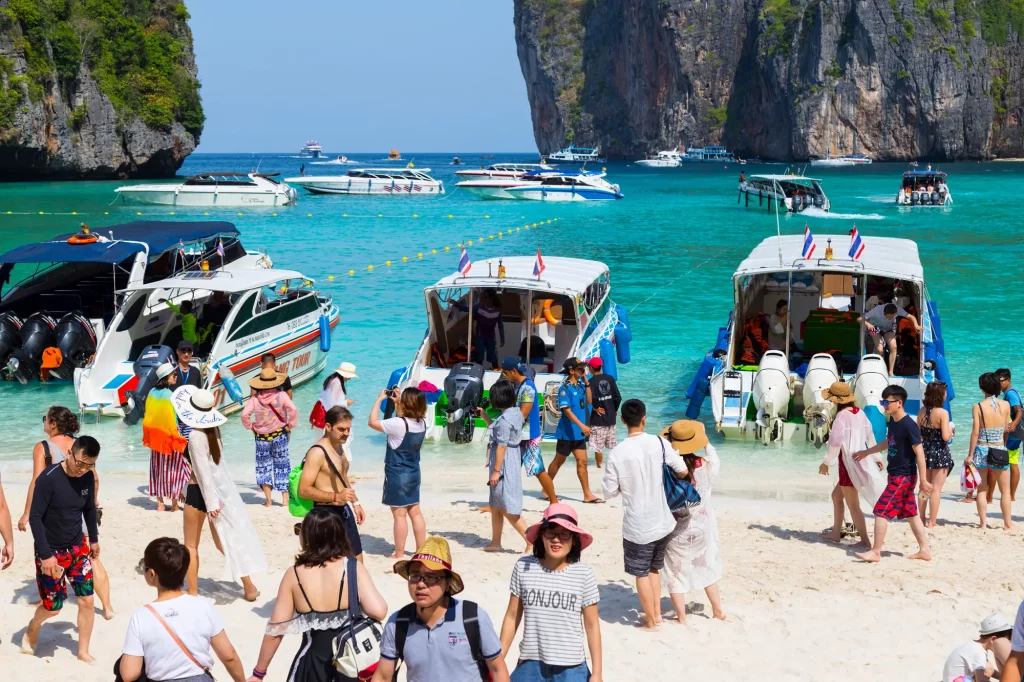
Introduction
Coral reefs are one of the most important lifelines on planet Earth.
- They are the primary habitat for about 25% of all known marine species, providing shelter, sustenance, and a safe nursery space.
- In addition to supporting life underwater, coral reefs are also responsible for producing the oxygen we breathe on land.
- They also protect our coastlines from erosion and the impacts of climate change, and they supply a form of livelihood and sustenance for coastal communities.
Although they are essential to a balanced ecosystem for the entirety of planet Earth, coral reefs currently face an array of threats and are in a state of vulnerability. These threats are human-induced, ranging from plastic pollution, climate change and irresponsible tourism. Scroll down to learn about the impact of humans on coral reefs.
What is a Coral Reef and What are 3 Ways Humans Impact them?
In simple terms, coral reefs are made up of individual coral polyps. These grow and live on the exoskeletons of previous living polyps, which eventually expand to form large structures that come in many shapes and colors – our coral reefs.
Within the polyps, live zooxanthellae. These organisms have a symbiotic relationship with the coral polyps where they are provided with a home and nutrients for photosynthesis, and in turn, provide energy for the polyps in addition to a brightly colored appearance.
Even though coral reefs provide the foundation of a liveable habitat for many marine organisms, and is a vital part of the complex marine ecosystem, they are extremely sensitive to changes in the environment.
If we were to group human impacts on coral reefs into 3 main categories, they would be:
Human overpopulation
Pollution
Climate change
Let’s break this down:
How Does Human Overpopulation Impact Coral Reefs?
The impacts of human overpopulation on coral reefs consist of poorly managed industries such as tourism, fishing, and coastal development.
Unsustainable and irresponsible marine tourism can result in physical damage to coral reefs due to a lack of a code of conduct for marine activities, and awareness of the importance of our coral reefs. Even though marine ecotourism has been encouraged as a sustainable alternative to fishing as a form of livelihood for local coastal communities around the world, these practices need to follow a code of conduct so as not to degrade and damage the coral reefs which provide the opportunity for a sustainable source of income.
The Great Barrier Reef is an excellent example of marine education and awareness in play, as there are strict codes of conduct for dive schools and operators. However, coral reefs are still facing environmental threats and physical damage.
Overfishing to sustain the interests and needs of a growing population is also an issue that impacts coral reef health. Fish and coral reefs are exploited and damaged for the aquarium trade, and by the seafood industry, leaving wild populations vulnerable to extinction. Tampering with the natural balance of food webs and trophic relationships can indirectly impact non-targeted species, leading to an overflow of damage to the marine environment as a whole.
Another impact of human overpopulation on coral reefs is the development of coastlines. This is often poorly managed with little to no consideration for the marine environment that borders the coastline, and thus coral reefs are frequently subjected to damage from toxic run-off, smothering from excess sedimentation due to construction, and simply destroyed in place of man-made structures. Ill-managed coastal development causes habitat destruction, and in turn, also destroys the natural defense mechanism that coral reefs provide against erosion and threats of climate change.
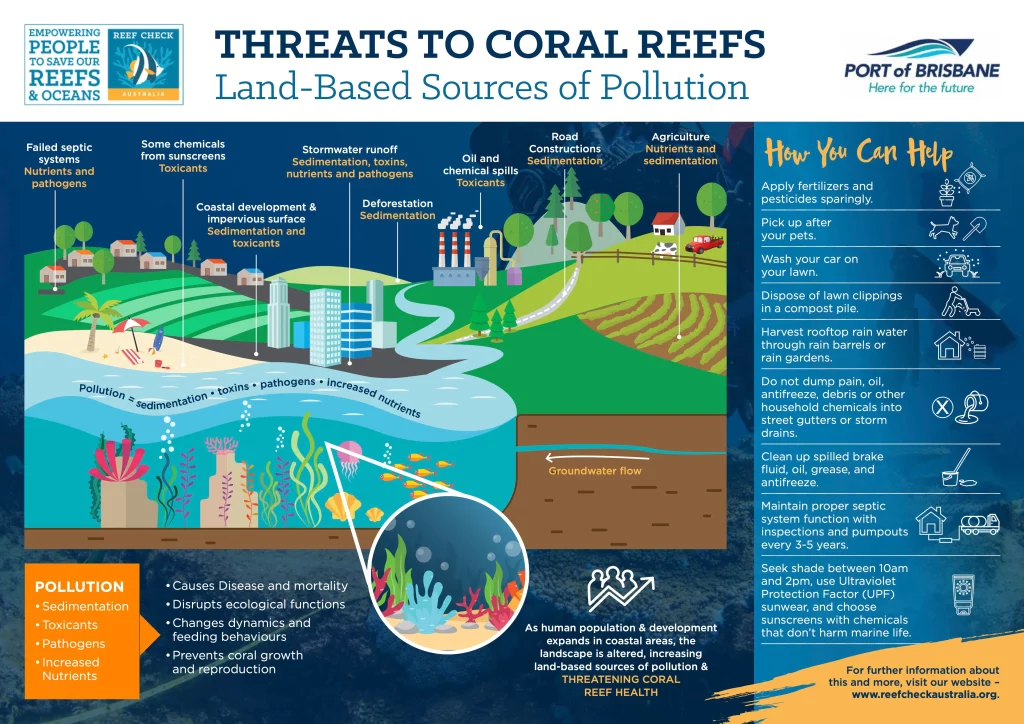
How Does Human Pollution Affect Coral Reefs?
Human pollution is another symptom of overpopulation. It is the lack of waste management in place and education in regard to proper waste disposal practices.
Thus, our coral reefs must endure the contamination of toxic substances (from improper waste disposal systems and irresponsible behavior), and the impact of marine plastic and microplastic pollution. Both of these directly and indirectly cause harm to marine life if ingested, and can add stress to already sensitive and threatened populations.
Runoff in the form of enriched nutrients also harms coral reef ecosystems. This can lead to eutrophication and thus an increase in vegetation and algae, consequently blocking out essential UV rays to the reef and inhibiting the zooxanthellae from photosynthesizing. Amongst several cascading effects on other marine organisms, this will result in the death of zooxanthellae and their coral hosts.
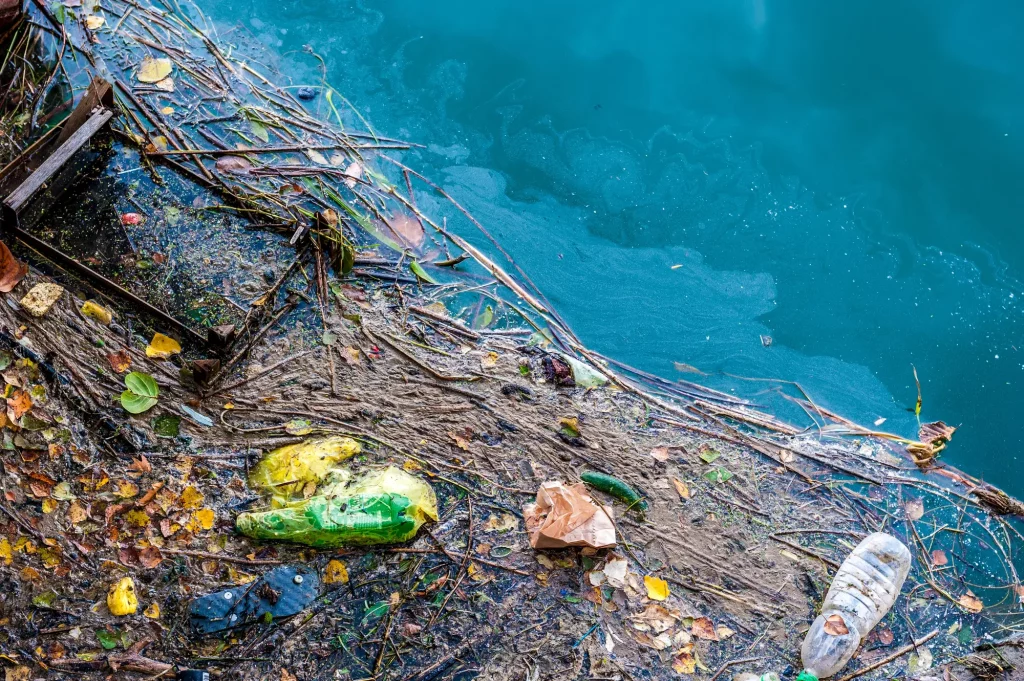
The Impact of Climate Change on Coral Reefs
Changes in ocean chemistry can also lead to acidification and coral bleaching. These are the impacts of anthropogenic climate change.
The ocean is a carbon sink, meaning it sequesters carbon and regulates the greenhouse gases in our atmosphere. However, due to climate change, the ocean is absorbing more carbon and is becoming more acidic. This change in water pH is not favored by coral growth, and actually inhibits it.
Furthermore, oxybenzone is a common ingredient in sunscreen lotions, and has been proven to contribute to ocean acidification. This is another example of irresponsible tourism and human behavior.
Climate change has also altered the temperature of our oceans. Slight changes can stress the zooxanthellae into abandoning their coral hosts. As with eutrophication, without healthy zooxanthellae coral polyps will die. This is what causes coral bleaching – as the colors of the coral come from healthy polyps hosting healthy zooxanthellae. This is an occurrence that can be seen worldwide, however, seems to be the most drastic on the Great Barrier Reef.
Hand in hand, ocean acidification, and coral bleaching create a feedback loop of an environment where corals die and struggle to regenerate. This can eventually lead to a collapse of the entire marine ecosystem.
Preservation and Conservation
Fortunately, there are conservation efforts in place aiming to preserve, protect, and educate the public about the importance of coral reefs and safeguarding the marine ecosystem.
Strategies such as sustainable eco-tourism is encouraged throughout the world’s coastal communities. This is especially effective as it provides an economically and environmentally sustainable source of income for people, and protects wild populations of fish and coral from being damaged and overexploited, whilst often providing an opportunity for education and the spreading of awareness regarding the importance of coral reefs.
Getting tourists and communities interested in the ocean and its coral reefs also contributes to the benefits of citizen science, which can ultimately lead to new understandings of marine life, and thus help organizations advocate for species and area protection and conservation.
Though we are still a long way off from protecting all of the world’s coral reefs, more conservation efforts are being made now than ever before, and awareness is spreading internationally. From reef restoration projects on the Great Barrier Reef to marine protected areas around the world, many are beginning to understand and advocate for the protection of coral reefs.
Tourism can be a force for good if people are respectful of the ocean and well-informed. Even though we have caused significant harm to marine ecosystems, there is still time to make a positive change, as expressed by marine scientist Sylvia Earle:
In a world that is rightly so concerned about climate change and the atmosphere, to be so ignorant and neglectful of our oceans is deeply troubling. However, … having woken up to this living disaster and having realized that there are limits to how much abuse we can inflict, it’s not too late to turn things around.
Sylvia Earle
